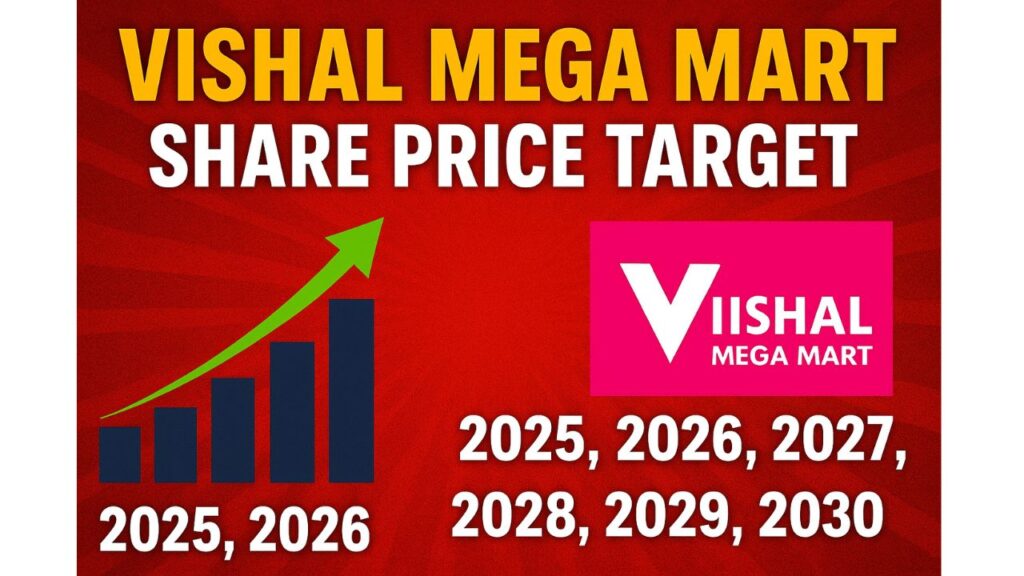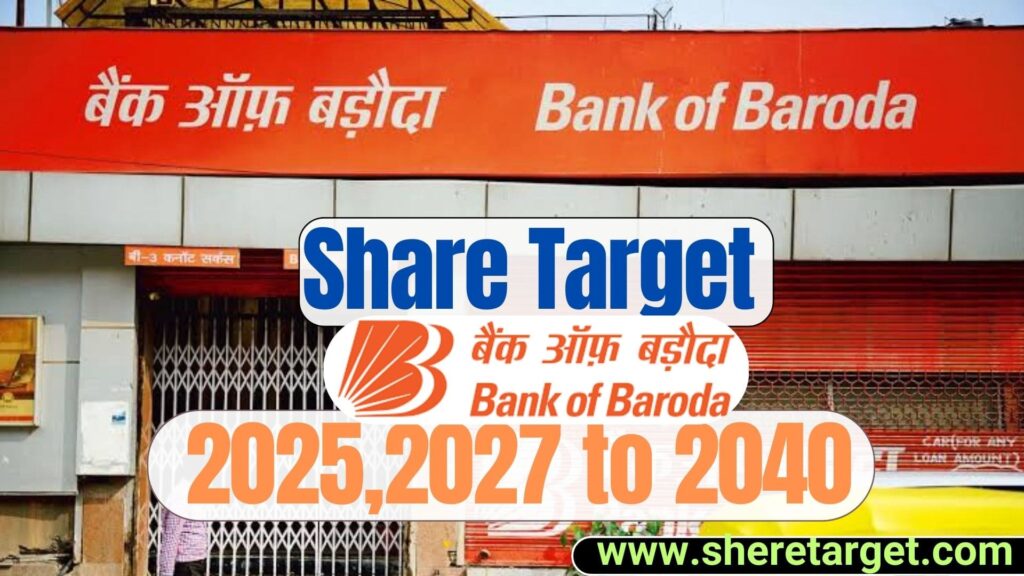If you missed the Vishal Mega Mart IPO in December 2024, don’t worry—you’re not alone. But here’s the thing: this budget retail giant has been making waves since its listing, and investors are now asking the million-dollar question: where is this stock headed over the next five years?
Trading around ₹144 as of early October 2025, Vishal Mega Mart has already given investors a solid 36.85% return over the past year. Not bad for a company selling affordable clothing and household goods to India’s middle class. But let’s get into what really matters—where analysts think this stock is going and whether it deserves a place in your portfolio.
The Story Behind the Numbers
Vishal Mega Mart isn’t your typical retail play. The company has a market cap of ₹69,487 crore, revenue of ₹11,260 crore, and profit of ₹688 crore. What’s interesting here is the business model itself.
Revenue grew from ₹5,588.51 crore in FY22 to ₹7,586.04 crore in FY23, reaching ₹8,911.95 crore in FY24. That’s a consistent upward trajectory. Even more impressive? Net profit jumped from ₹202.77 crore in FY22 to ₹321.27 crore in FY23, and further to ₹461.93 crore in FY24.
The company achieved a revenue CAGR of 27.72%, which is solid for a retail business. But here’s what caught my eye: Vishal Mega Mart operates with an operating margin of 13-14%, notably higher than DMart’s 8-9%. They’re not just growing—they’re growing profitably.
The company operates 626 stores as of mid-2024, focusing heavily on Tier 2 and Tier 3 cities where competition is less intense and customer loyalty tends to be stronger. This isn’t Walmart competing in metros; this is smart positioning in underserved markets.
Price Target Breakdown: What the Street Says
Let’s cut through the noise and look at actual projections. Different analysts have varying opinions, but there’s a pattern worth noting.
Near-Term View (2025)
According to 10 analysts, the target price sits at ₹152.8, representing an upside of 4.64% from the current price of ₹143.85. That’s pretty modest—essentially sideways movement with a slight bump.
However, other forecasts are more optimistic. Some analysts predict the minimum price of Vishal Mega Mart shares in 2025 could be ₹125, with a maximum reaching ₹200. That ₹200 upper target would represent nearly 39% upside from current levels.
Another forecast suggests the stock could reach ₹105 by early 2025, climb to around ₹140 by mid-year, and potentially hit higher targets by year-end.
Mid-Term Outlook (2026-2028)
Here’s where things get interesting. As the company continues its store expansion and strengthens its position in budget retail, analyst projections start showing more meaningful appreciation.
For 2026, targets range from ₹160 to ₹220, assuming the company maintains its growth momentum and successfully executes its expansion strategy.
By 2027, forecasts suggest the stock could trade between ₹190 and ₹280, particularly if the retail consumption story in India stays strong.
Looking at 2028, projections become more aggressive, with estimates placing the stock between ₹230 and ₹350, contingent on market leadership consolidation and operational efficiency improvements.
Long-Term Vision (2030)
This is where the divergence really shows up. One analysis predicts a 2030 target price of ₹747, with a range between ₹522 to ₹747. That’s a potential 5x return from current levels if things go exceptionally well.
A more conservative view places the 2030 range at ₹210 to ₹250, which would still represent a solid 46-74% gain from today’s price.
Here’s a consolidated table showing various scenarios:
| Year | Conservative Target | Mid-Range Target | Optimistic Target |
|---|---|---|---|
| 2025 | ₹125 | ₹160 | ₹200 |
| 2026 | ₹160 | ₹190 | ₹220 |
| 2027 | ₹190 | ₹235 | ₹280 |
| 2028 | ₹230 | ₹290 | ₹350 |
| 2030 | ₹210 | ₹480 | ₹747 |
The wide range for 2030 reflects genuine uncertainty about how the retail sector will develop over the next five years. Variables like consumption patterns, competitive dynamics, and execution quality will determine whether we see the conservative or optimistic case play out.
What’s Fueling These Projections?
Understanding the “why” behind these numbers is crucial. Here are the core drivers:
Store Expansion in Underserved Markets: Vishal Mega Mart’s focus on Tier 2 and Tier 3 cities is strategic. These markets have less competition from organized retail and are experiencing income growth. As disposable incomes climb in smaller cities, demand for affordable, branded merchandise grows.
Asset-Light Business Model: The company operates an asset-light model by leasing stores and centers. This means they don’t tie up capital in real estate, allowing faster expansion and better return on capital employed.
Superior Operating Margins: That 13-14% operating margin isn’t an accident. It reflects buying power, efficient inventory management, and smart pricing strategies. As scale increases, these margins could improve further.
Large Addressable Market: Vishal operates in the aspirational retail market worth ₹72 trillion. Even capturing a small percentage of this market translates to substantial revenue opportunity.
Profit Growth Trajectory: The company has demonstrated it can grow profits faster than revenue in some periods, suggesting improving unit economics as they scale.
The Reality Check: Risks You Can’t Ignore
Let’s be honest—no investment comes with guaranteed returns. Here’s what could derail these optimistic forecasts:
Competition from E-commerce: While Vishal focuses on physical stores, e-commerce platforms like Amazon, Flipkart, and Meesho are also targeting budget-conscious consumers. If online shopping penetration accelerates in Tier 2 and Tier 3 cities faster than expected, it could pressure foot traffic and margins.
Consumer Spending Sensitivity: Budget retail is highly dependent on consumer sentiment and disposable income. An economic slowdown could hit this segment harder than premium retail.
Execution Risk at Scale: Opening and managing hundreds of stores across diverse geographies is operationally complex. Maintaining quality control, inventory management, and customer experience becomes harder as you scale.
Margin Pressure: While margins are currently strong, competition could force price cuts. Additionally, rising real estate costs (even for leased properties) or labor expenses could compress profitability.
Valuation Concerns: The stock trades at 10.7 times its book value, which isn’t cheap for a retailer. If growth disappoints even slightly, the market could reprice the stock quickly.
No Dividend Policy: Despite reporting repeated profits, the company isn’t paying dividends. While this suggests reinvestment for growth, it also means no passive income for investors.
Market Sentiment: Investment activity in Vishal Mega Mart shares has dropped by 3.29% over the past 30 days, indicating some cooling of investor interest.
Comparing to the Competition
You can’t evaluate Vishal Mega Mart in isolation. Let’s see how it stacks up against DMart, the gold standard in Indian retail.
In FY24, Vishal achieved a sales growth rate of 19.3%, surpassing DMart’s 16.4%. That’s notable—Vishal is actually growing faster than the market leader.
The margin story is even better. While DMart is known for operational excellence, Vishal’s 13-14% operating margin beats DMart’s 8-9%. This suggests Vishal has found a sweet spot in the market where they can command better pricing while still serving budget-conscious customers.
However, Vishal is much smaller than DMart in terms of absolute revenue and store count. The question is whether they can maintain these superior metrics as they scale up to DMart’s size.
Who Should Consider This Stock?
Based on the projections and company fundamentals, Vishal Mega Mart seems appropriate for:
Growth Investors with Patience: If you’re building a portfolio around India’s consumption story and can hold for 3-5 years, the potential returns look attractive. Just be prepared for volatility along the way.
Retail Sector Believers: If you think organized retail in India is still in early stages and that Tier 2/Tier 3 cities will continue developing, Vishal offers exposure to that thesis.
Moderate Risk Takers: This isn’t a speculative penny stock, but it’s also not a blue-chip stalwart. It sits in the middle—established business model with growth potential but not without risks.
This probably isn’t ideal for:
Conservative Investors: The valuation, growth expectations, and retail sector dynamics make this a moderate-to-high risk play. Traditional value investors might find better opportunities elsewhere.
Income-Focused Investors: No dividends mean no passive income stream. Look at established companies with dividend track records if that’s your goal.
Short-Term Traders: While there’s certainly trading activity, the real opportunity is in the multi-year growth story, not quarterly swings.
The Verdict: Realistic Expectations
Here’s my take after analyzing all this data: Vishal Mega Mart has built something interesting in Indian retail. The focus on underserved markets, strong margins, and consistent execution make it a compelling story.
The ₹747 target for 2030 seems optimistic but not impossible if everything goes right—continued store expansion, market share gains, margin maintenance, and strong consumer spending. That’s a lot of “ifs.”
The more conservative ₹210-250 range for 2030 seems achievable if the company simply maintains current performance levels without major expansion success. That still represents decent returns—roughly 10-12% annually, which isn’t spectacular but beats fixed deposits.
My realistic expectation? Somewhere in between. If Vishal can grow store count by 15-20% annually, maintain margins above 12%, and keep profit growth in the 20-25% range, a stock price around ₹400-500 by 2030 seems reasonable.
Final Thoughts
Vishal Mega Mart isn’t a get-rich-quick stock, but it’s not a sleeper either. It’s a solid business in a growing sector with decent growth prospects and reasonable (if not cheap) valuation.
The key things to watch:
- Store expansion pace: Are they opening stores in profitable locations?
- Same-store sales growth: Are existing stores growing sales, or is all growth coming from new locations?
- Margin trends: Can they maintain 13-14% operating margins as they scale?
- Competition: How are DMart, Trent, and e-commerce players responding?
- Consumer sentiment: Are Tier 2/Tier 3 consumers continuing to increase spending?
If you’re investing in Vishal Mega Mart, you’re betting on India’s consumption story, the shift to organized retail in smaller cities, and management’s ability to execute. Those are all reasonable bets, but none are guaranteed.
Do your homework, watch the quarterly results, and remember that price targets are educated guesses, not certainties. The market has a habit of surprising everyone—both positively and negatively.
As always, invest only what you can afford to lose, diversify your portfolio, and stay informed. The next five years in Indian retail will be fascinating to watch, and Vishal Mega Mart will be right in the thick of it.



